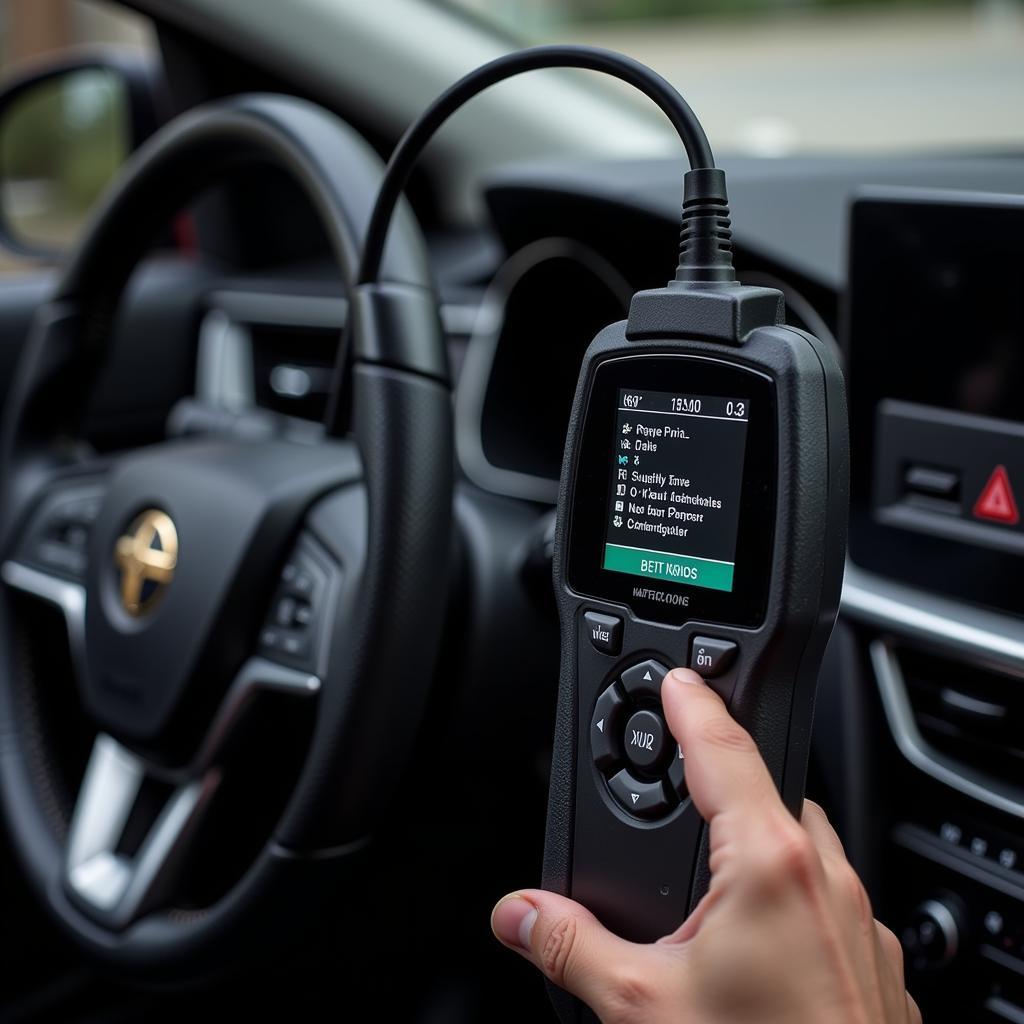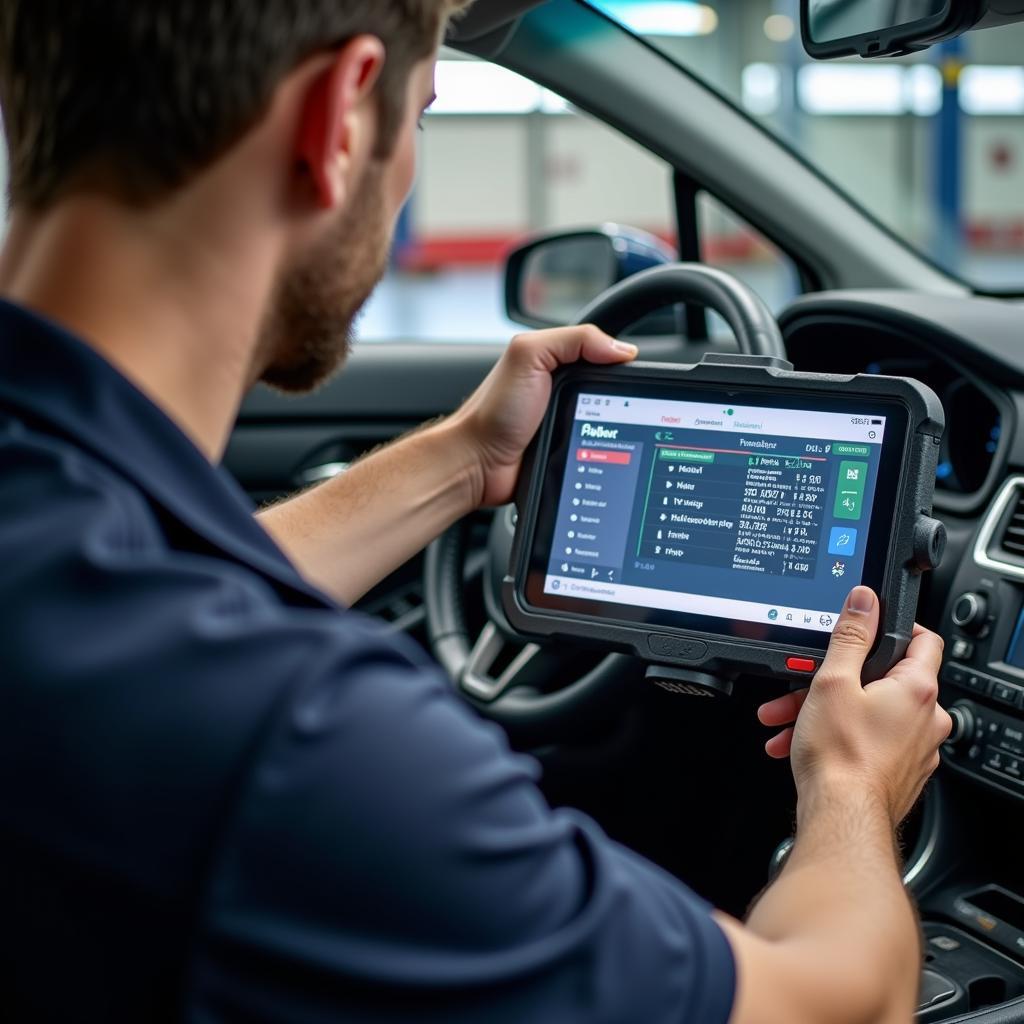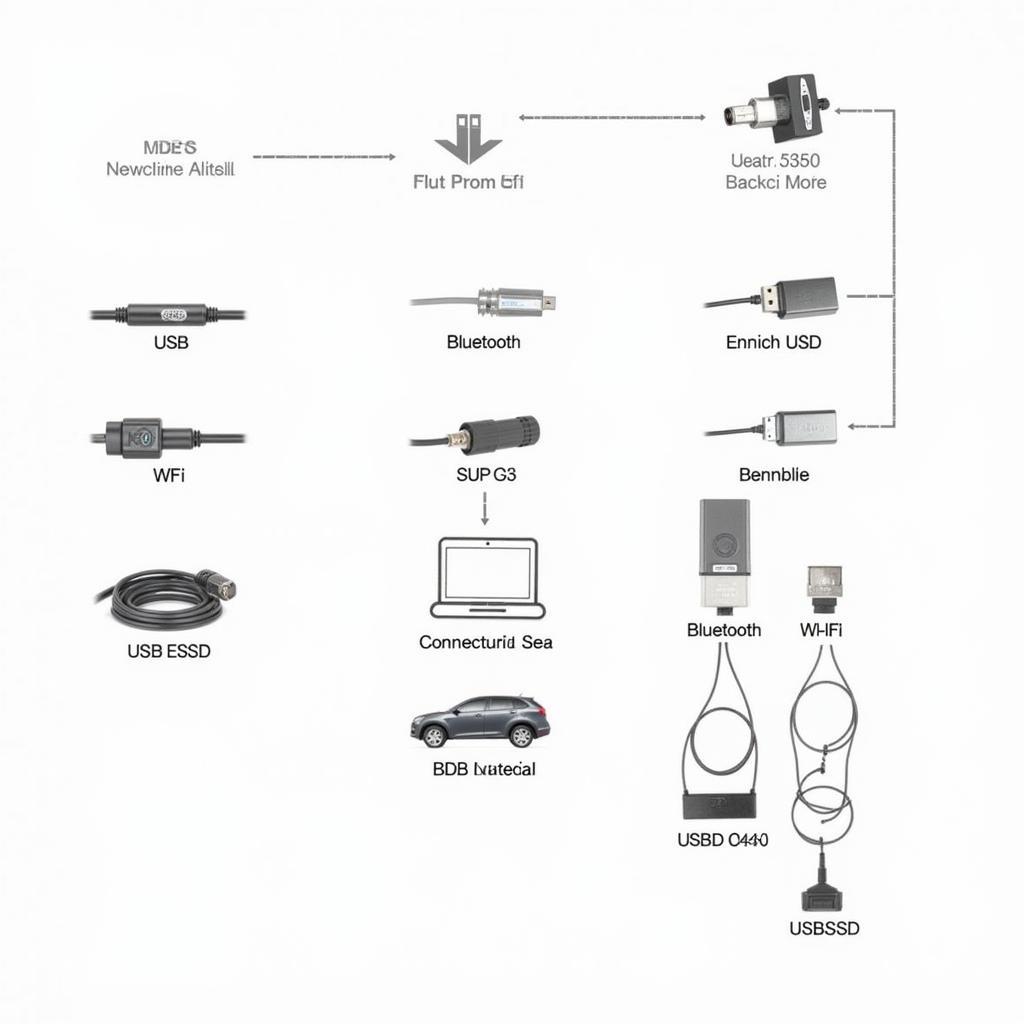In today’s tech-driven world, our cars are becoming increasingly sophisticated, packed with sensors and computer systems that monitor and control everything from engine performance to tire pressure. While this complexity brings numerous benefits, it can also make diagnosing car problems a daunting task. Thankfully, OBD scan tools with diagnostics have emerged as powerful tools, empowering car owners and technicians to unlock the secrets hidden within their vehicles. This guide delves into the world of OBD scan tools, exploring their capabilities, benefits, and how they can save you time, money, and frustration.
 Car Diagnostic with OBD Scan Tool
Car Diagnostic with OBD Scan Tool
Understanding the Power of OBD Scan Tools: Your Car’s Rosetta Stone
OBD, short for On-Board Diagnostics, refers to a standardized system that allows external devices to access a vehicle’s computer system and retrieve valuable diagnostic information. This system has been mandatory in all cars manufactured since 1996, making OBD scan tools an essential tool for any car owner or mechanic.
At the heart of this system lies the OBD-II port, a standardized 16-pin connector typically located under the dashboard on the driver’s side. This port serves as the gateway for OBD scan tools to communicate with your car’s computer, retrieving data from various sensors and modules.
From Cryptic Codes to Clear Insights: How OBD Scan Tools Simplify Diagnostics
Imagine this: your check engine light illuminates, casting a shadow of uncertainty over your next drive. In the past, this scenario often meant a trip to the mechanic, where you’d face the prospect of costly diagnostic fees. With an OBD scan tool, however, you gain the power to decipher those cryptic codes yourself.
These tools connect to your car’s OBD-II port and retrieve diagnostic trouble codes (DTCs), which are standardized codes that pinpoint potential issues. These codes, often appearing as a jumble of letters and numbers, hold the key to understanding what’s ailing your car. But an obd1 scan tool australia does more than just display codes; it translates them into plain English, providing a clear explanation of the problem.
Beyond Codes: Delving Deeper with Diagnostic Capabilities
While retrieving and interpreting DTCs is a core function of OBD scan tools, their diagnostic prowess extends far beyond this. Advanced scan tools offer a wealth of features that provide a comprehensive view of your car’s health, including:
- Live Data Stream: Access real-time data from your car’s sensors, including engine RPM, coolant temperature, oxygen sensor readings, and more. This feature allows you to monitor your car’s performance and identify potential issues before they escalate.
- Freeze Frame Data: Capture a snapshot of your car’s sensor readings at the moment a fault code was triggered. This information can be crucial in diagnosing intermittent problems that might not be present during a scan.
- Component Activation: Test individual components like actuators, solenoids, or relays to verify their functionality. This feature is invaluable for pinpointing faulty components and eliminating guesswork during repairs.
- ECU Information: Retrieve information about your car’s Engine Control Unit (ECU), including software version, manufacturer data, and more.
 Professional Mechanic Using OBD2 Diagnostic Tool
Professional Mechanic Using OBD2 Diagnostic Tool
Choosing the Right OBD Scan Tool: Finding the Perfect Fit for Your Needs
The world of OBD scan tools is diverse, offering options for every level of user, from the casual car enthusiast to the seasoned professional mechanic. When selecting a scan tool, it’s essential to consider your specific needs and budget. Here’s a breakdown to guide your decision:
1. Basic Code Readers:
- Ideal for: Car owners looking to read and clear basic DTCs.
- Features: Retrieve and clear DTCs, often limited to engine-related codes.
- Price Range: Most affordable option.
2. Enhanced Code Readers:
- Ideal for: DIY enthusiasts who want more diagnostic capabilities.
- Features: Read and clear DTCs from multiple systems, display live data streams, and may include freeze frame data.
- Price Range: Mid-range option.
3. Professional-Grade Scan Tools:
- Ideal for: Professional mechanics and advanced DIYers.
- Features: Comprehensive diagnostic capabilities, including bi-directional control, advanced coding functions, access to manufacturer-specific data, and often come with software subscriptions for updates and additional features.
- Price Range: Most expensive option.
Embracing the Future of Car Repair with OBD Scan Tools
As cars become increasingly complex, OBD scan tools are no longer a luxury but a necessity for efficient and cost-effective car maintenance. From basic code readers to sophisticated professional-grade tools, there’s an option for everyone. By understanding the power of these diagnostic companions, you can unlock a new level of control over your car’s health, saving time, money, and unnecessary trips to the mechanic.
For instance, a gm obd1 scan tool can be incredibly useful for owners of older General Motors vehicles, allowing them to diagnose and address issues specific to their make and model.
Frequently Asked Questions about OBD Scan Tools with Diagnostics:
1. Will any OBD scan tool work with my car?
While most cars manufactured after 1996 use the OBD-II standard, it’s crucial to check your car’s compatibility with the specific scan tool you’re considering.
2. Can I use an OBD scan tool to fix my car?
While OBD scan tools can help you identify problems, they don’t fix them. They provide valuable information to guide repairs, but you’ll need the appropriate tools and knowledge to address the underlying issues.
3. What is the difference between an OBD scan tool and a code reader?
Code readers typically only retrieve and clear DTCs, while OBD scan tools offer a broader range of diagnostic features like live data streams, freeze frame data, and component activation.
4. Are there OBD scan tools for specific car makes and models?
Yes, some manufacturers offer specialized scan tools designed for their vehicles, providing access to proprietary systems and data not accessible through generic tools.
5. How often should I use my OBD scan tool?
It’s good practice to scan your car periodically, especially if the check engine light illuminates, you notice performance issues, or after completing any DIY repairs.
6. Can I clear DTCs myself with an OBD scan tool?
Yes, most OBD scan tools allow you to clear DTCs. However, it’s important to address the underlying problem before clearing codes, as simply erasing them doesn’t resolve the issue.
7. What should I do if my OBD scan tool isn’t working?
Ensure the scan tool is properly connected to the OBD-II port, the vehicle’s ignition is turned on, and the tool’s battery is charged. If problems persist, consult the tool’s manual or contact the manufacturer for support.
Need Help Choosing the Right OBD Scan Tool?
Contact ScanToolUS today at +1 (641) 206-8880 or visit our office at 1615 S Laramie Ave, Cicero, IL 60804, USA. We’re here to help you find the perfect diagnostic tool for your needs!




Pingback: The GM Tech 2 Scan Tool: A Comprehensive Guide - Car Scan Tool
Pingback: G Scan Diagnostic Tool Australia Price: A Comprehensive Guide - Car Scan Tool